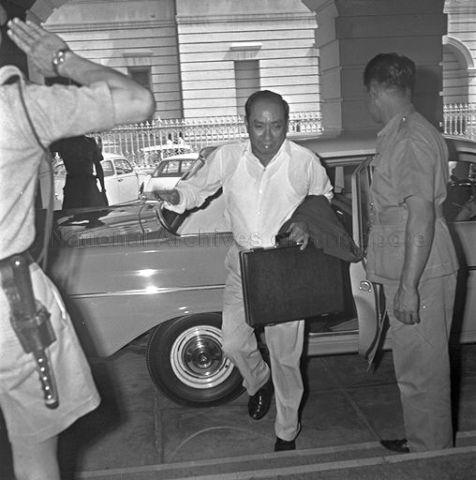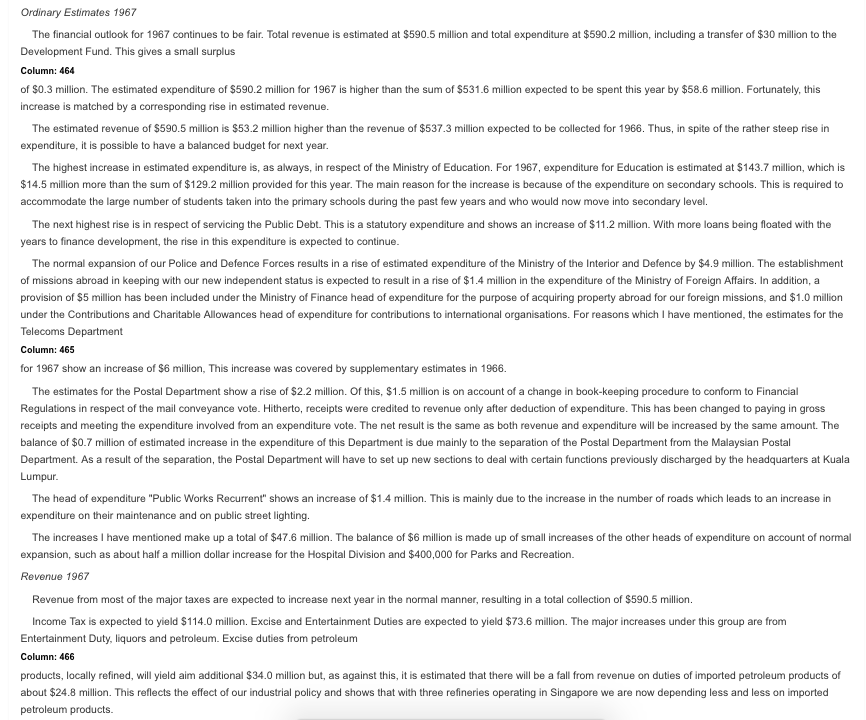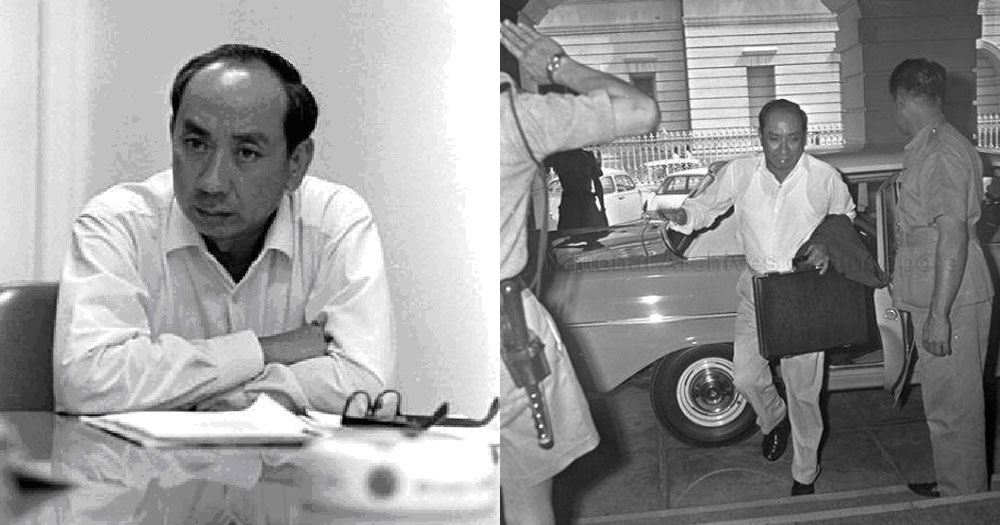A Budget speech is delivered annually in Parliament.
It is considered one of the most important speeches every year. It lays down the expenditure of Singapore and gives citizens a clear idea what to expect as a nation for the year ahead.
How good or difficult times are can typically be gleaned from just this one speech.
Budget speeches are long
However, as with all speeches, there are downsides.
The first-ever Budget delivered in December 1965 by finance minister Lim Kim San lasted one hour and 20 minutes.
It was very long.
And by the time the third Budget came around in 1967, the next finance minister already knew this annual affair was too much to deal with.
Goh Keng Swee cuts to the chase
No one knows this better than the late Goh Keng Swee, Singapore's economic architect and finance minister from 1967 to 1970.
 Goh arriving for his Budget speech in 1968. Via NAS.
Goh arriving for his Budget speech in 1968. Via NAS.
Goh's maiden Budget speech in 1967 was delivered in his characteristic no-frills, no-nonsense style with a touch of low-key sass.
Departing from tradition, Goh did not provide a detailed breakdown and explanation of the the various estimated expenditures and revenue.
The reason?
Goh said, as quoted from official Hansard records:
I have long suspected that nobody pays the slightest attention either in this House or when they read the proceedings in tomorrow's newspapers or in Hansard nobody pays the slightest attention to the interminable series of figures involved in an exposition of this kind. The average human mind unfortunately does not have a high degree of perceptivity in respect of numbers, and I am afraid that it is the misfortune of Finance Ministers in their Budget presentation to labour under the misapprehension that their audiences are eagerly and intelligently digesting the outpouring of numerical data. I have come to the conclusion that this is a waste of time both on my part and on the part of honourable Members.
For context, this was the wall of text that Goh's predecessor Lim delivered one year before in 1966:
 Have your eyes glazed over yet?
Have your eyes glazed over yet?
Written statement later
Instead, Goh informed Parliament that he would send out a "written statement setting out the Finance Ministry's account of the sums entered under various heads of revenue and expenditure" in the following year.
This took the form of a Treasury Paper that made its debut in Goh's 1968 Budget speech.
Members don't have to sit and pretend to absorb numbers, and Goh himself avoided a "tedious enumeration of figures".
Such a practice saved everybody's time and was highly pragmatic.
Everybody wins.
To break the tedium, the finance minister resorted to punning in 2018:
Top image via NAS
If you like what you read, follow us on Facebook, Instagram, Twitter and Telegram to get the latest updates.
